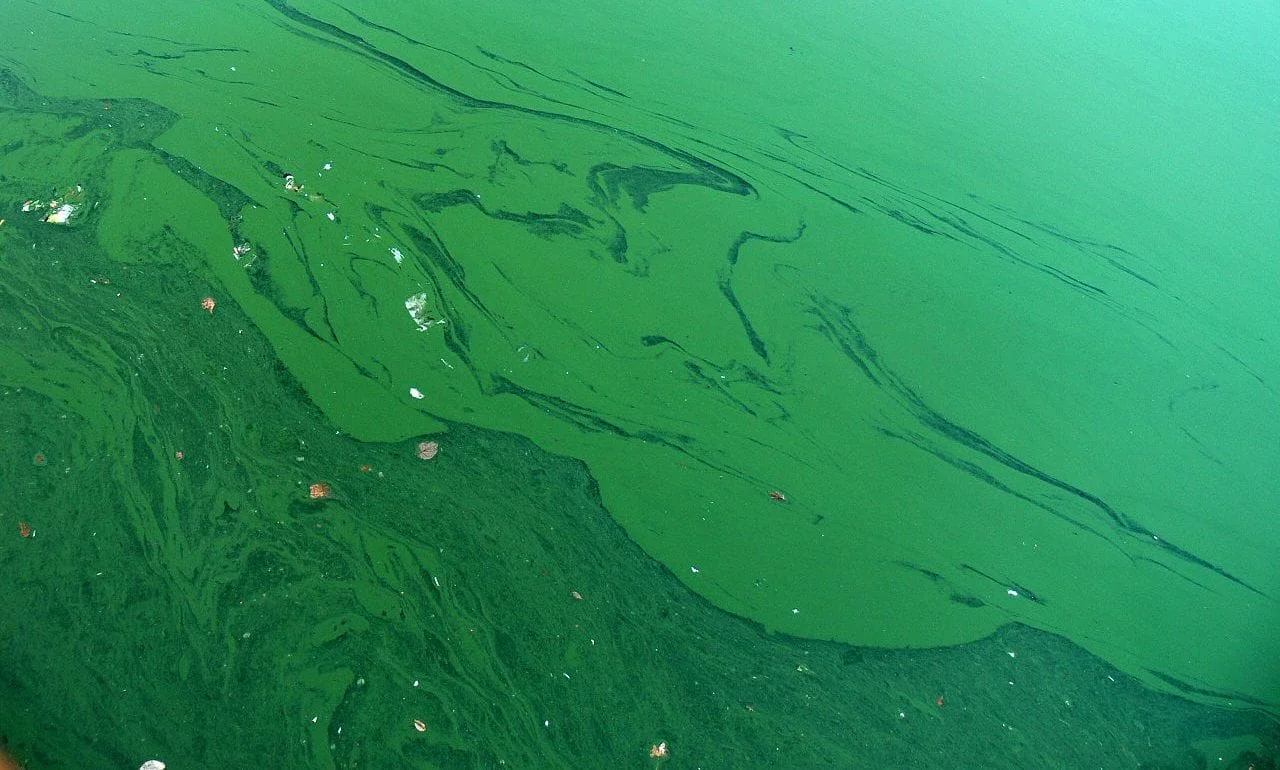There have been several reports of dogs becoming severely ill and even dying from ingestion of blue-green algae, or cyanobacteria, in the media lately. We want to alert all our clients about blue-green algae and how it can affect your pet.
What is blue-green algae, or cyanobacteria, and how does it form?
Cyanobacteria forms most readily in fresh water when temperatures are above 75 F and sunny conditions. The toxic algal blooms often have a bright pea-green or slime-like appearance on the surface of the water.
The growth of cyanobacteria is stimulated by high levels of nitrogen. This happens after heavy rains or snows that cause run off from fields and pastures where there is manure from livestock or wildlife.
Heavy nitrogen run off also occurs where there is heavy fertilizer use or after grass or forest fires. Windy conditions concentrate the toxic blooms to the shoreline.
There are more than 30 species of cyanobacteria. Some produce liver toxins, others produce neurotoxins and some produce both.
When a dog ingests cyanobacteria by either drinking the water or licking the algae off their coat, neurologic (behavioral) signs can develop within minutes! Liver damage can happen after only an hour!.
You should call your veterinarian immediately if you see the following signs:
- Sudden stumbling or unable to walk in a straight line
- Walking in circles while seeming confused
- Tremors or uncontrolled shaking
- Seizures
What should you do if you think your pet has been exposed to blue-green algae?
Bathe your dog as soon as possible with fresh water to prevent ingestion of the cyanobacteria from licking their coat. It is likely that your veterinarian will recommend hospitalizing your pet. Your veterinarian may give medications to induce vomiting if it is safe for your pet.
Activated charcoal is an absorbent that can be given orally to help neutralize the toxin. Your veterinarian will likely collect blood to get baseline values and then will monitor these values at 24 and 48 hours.
Other symptomatic and supportive treatments can be intravenous fluids, medications to control seizures, medications that control vomiting and nausea and possibly antibiotics.
It is important to know what blue-green algae is and the dangers it can pose to your pet. If you have any questions regarding blue-green algae or any other issues with your pet please contact the clinic, we are happy to talk with you and help your pet have a safe summer!


